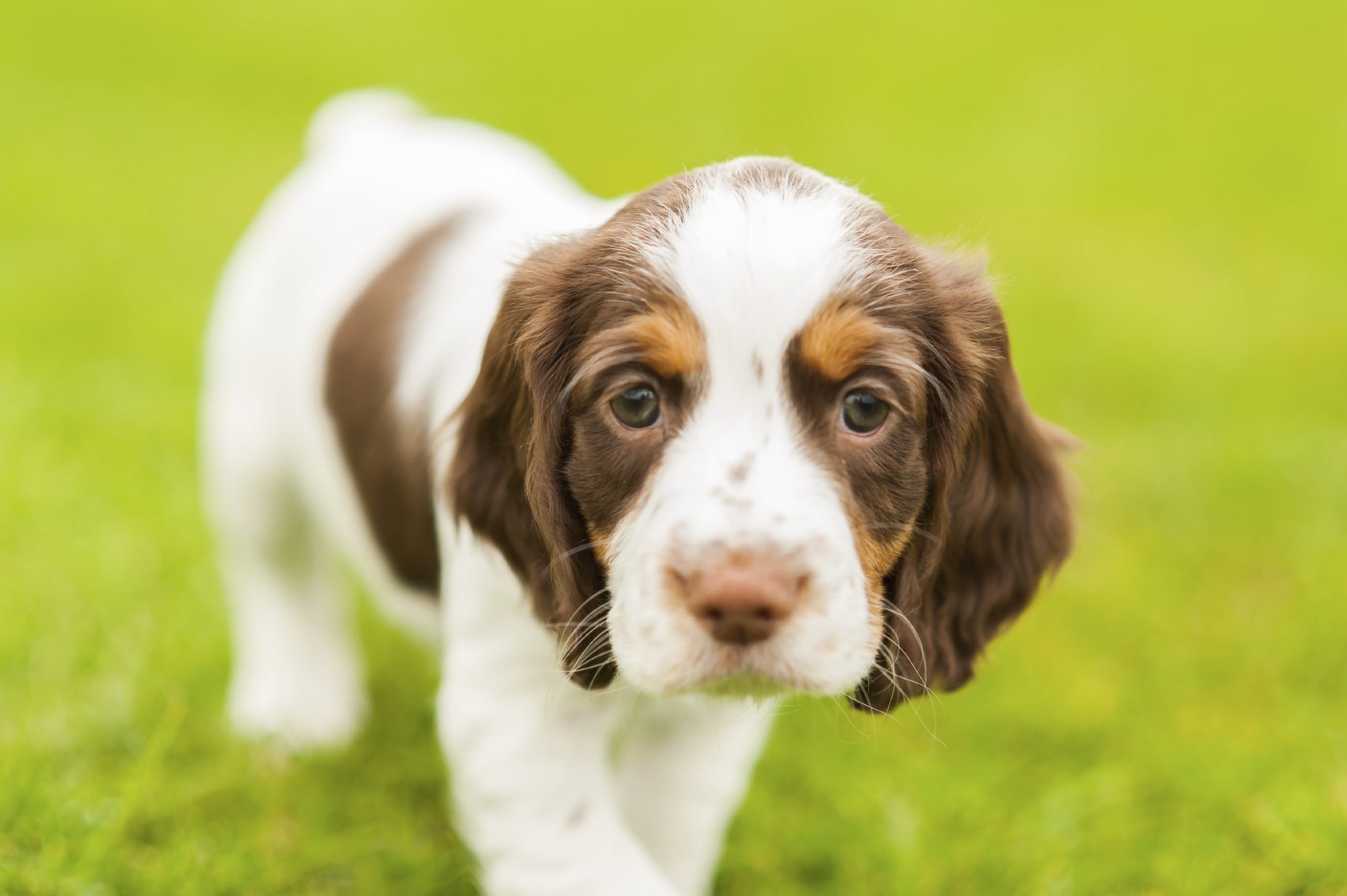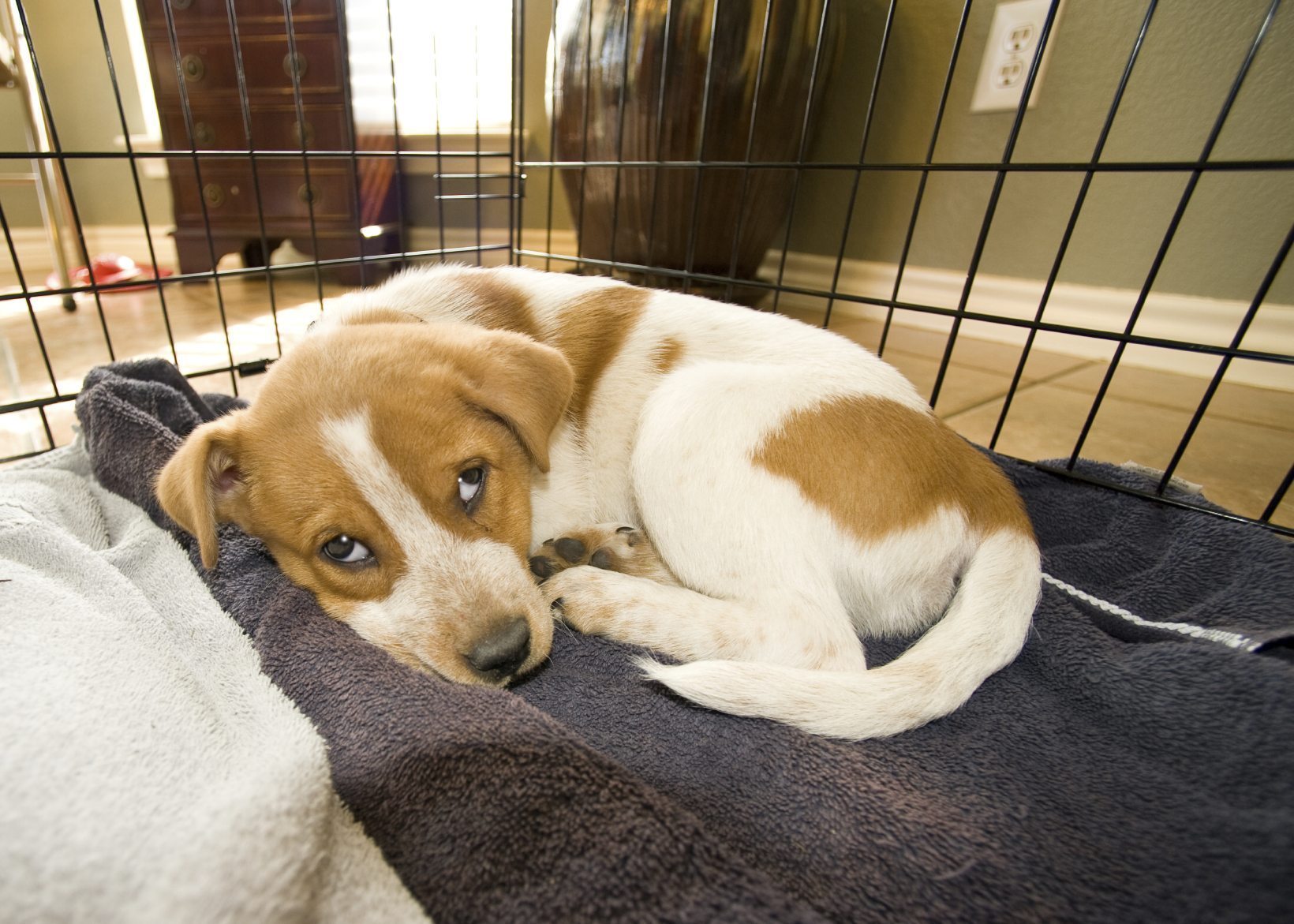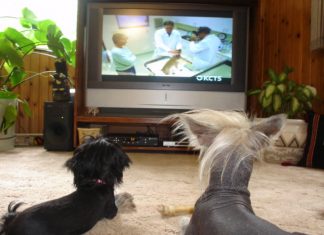CRATE TRAINING A PUPPY FOR HOUSE TRAINING PURPOSES
Important Note: One of the most successful methods for house training your puppy – is to use a crate. First and foremost, you want your puppy to like her crate. She must feel comfortable and secure while in the crate. If your puppy already loves her crate, keep reading on. However, if the crate is new, then please first read our article on Crate Training Tips before proceeding with the training tips below.
Now that your puppy loves the crate, it is time to use the crate as a management tool to teach him where to go potty.
The Training Concept
Whenever your puppy wakes from a nap, you should immediately take him outside to go potty. Once he goes, gentle clap your hands and “have a party” with lavish praise for your pup. I do not use treats to reward elimination – it is a self-rewarding behavior, but do praise enthusiastically because puppies love the attention. Once your puppy has finished, play with them a bit by tossing a toy or playing a game of tug with him. You can give your puppy some free time inside with you although you should be nearby and able to keep an eye on him.
How Long Can My Puppy Hold It??
There is a formula to determine the length of time an awake puppy can go without having an accident. It is roughly one hour per month of age, plus one. So, a 2 month old puppy can usually go accident free for about 3 hours. This is a rough estimate so you will need to adjust as necessary. For smaller breeds, I usually just try for one hour per month of age, without adding the extra hour.
If your puppy is having frequent accidents, reduce the amount of time you allow the pup to play outside the crate in between trips outside to potty.
Let’s Get Started – Potty Training Your Puppy
Managing with the crate to house train your puppy goes like this. Once awake from a nap, take your puppy outside to potty and watch them carefully. It’s a good idea to use the same door to go outside each time, and to say something like “let’s go potty” while you both are on your way out the door. I like to allow the dog freedom to sniff and wander while I keep a close eye out for them to begin elimination. Three to five minutes is usually enough time for the puppy to eliminate if they need to. If your puppy is successful when you take him out, praise, have a party, play for a minute or two then come inside, or play as soon as you come inside. Puppy then gets some freedom to play outside the crate for the amount of time determined from the above formula.
The next time you go outside for a scheduled potty break, repeat the above process if puppy is successful. If the puppy does not go potty, bring him in and gently ask him to go into the crate. Wait about 10 minutes and take puppy outside again. If puppy goes potty, have a big party and return inside for some fun and time outside of the crate. Reset the clock on his free time once again. If puppy does not go potty after 10 minutes in the crate, gently repeat the crate time and try again in 10 minutes.
Use Play As A Reward
After only a few days of this schedule, the puppy may wander over to the door and whine a bit or sniff around. Take this opportunity to go outside and see if the puppy will eliminate. Every time your puppy is successful outside be sure to have a party and spend a moment or two playing with your puppy as a reward. Be sure the play you initiate is rewarding to your puppy. Do not allow your puppy to practice unacceptable behavior, like chewing on your hands or grabbing at your ankles or pants. Instead, show the puppy how to play nicely with a toy that you toss and allow them to fetch. Remember not to take the toy away or engage in a struggle for it. Simply get another toy and help the puppy focus on the second toy, then you pick up the first one.
Make Adjustments
As your puppy grows you will gradually be able to increase the length of time he can spend outside of the crate. Continue to ask puppy to go into the crate for 10 minutes when they do not eliminate on a scheduled break. However, when you find puppy is having to go into the crate more often because he didn’t have to eliminate, then increase the schedule time before you go outside. This is something you will need to adjust every week or two.

Exceptions and Common Sense
A few exceptions to these procedures may occur from time to time. If your puppy comes inside and drinks a lot of water for example, you may need to reduce the time before your next potty break to avoid an accident. Do not keep water away from your puppy! They need fresh, clean water to grow and be healthy, and it increases your chances for success if you monitor the water and adjust your schedule accordingly. Remember, this process gets easier every day if you work with your puppy and help him to be successful.
It’s a good idea for your puppy to sleep in the crate until they are completely house trained. This is typically around the age of 8 to 10 months, and you should continue to use the crate for sleeping if you are having any accidents at all. Most puppies will sleep through the night in their crate once they are 10 to 12 weeks of age. There are exceptions to this rule, so I like to have the crate in my room in case the puppy needs to go out in the middle of the night. Having a tired puppy go into the crate each night will help you get a good nights rest too.
Keep It Stress Free
If your puppy has an accident, clean it up and get on with your life! Do not punish your puppy – it could actually be your mistake of not letting the puppy out sooner Puppies are living creatures, not robots and sometimes accidents happen. Puppies who become stressed or have a lot of anxiety, may have stomach upsets that cause them to have loose stools or drink more water and have to pee sooner than normal. Consider all of the possibilities and adjust the schedule to take more trips outside when things are different and more demanding for you inside your home.
Photos: iStock







